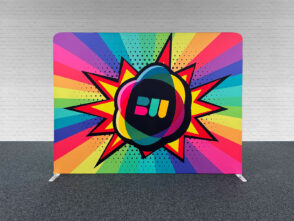Many businesses use outdoor advertising to publicise their brand and products. Outdoor advertising methods are effective for promoting services in particular geographic areas, which is why they work so well for smaller businesses.
From A4 signs and large billboards to transit shelters and event banners, implementing just one form of outdoor advertising can attract a wide audience and increase revenue for your company. It’s easy enough to design and draw your own, but for a professional, weather-resistant sign, implement the following steps:
Step 1: Choose an ideal location
You first need to make a decision on where you want your ad displayed, whether that’s on a billboard along the motorway or an A3 sign to hang in front of a store. Choose a display spot that your target audience will frequently pass.
Step 2: Obtain the specifications
Next, work out the exact size of your prospective ad. If you intend to hang it outside a building, measure the space where the sign is being displayed. Billboards can be up to three metres tall and 14 metres wide, with extensions that can be added to fit on the top or sides, making them even taller or wider. You can book a billboard space with an advertising agency, so get the size and details of the ad through them.
Step 3: Make a design
You don’t want to overload your sign with content – the fewer words, the better. If a car is driving past, they’ll only have a few seconds to process the information so ensure that you’re using a large and captivating headline. Follow this with only a few lines of copy if needed and an engaging call to action. Bright colours and large images are features that can reinforce your message.
Step 4: Print your sign
Once your sign has been designed, find a printing firm that has experience in creating outdoor signage. You will need to provide your design files with every detail such as font type and ideally request a weather-resistant finish with UV protection to increase the lifespan of the sign. You can also request hanging details such as grommets to be added to your sign or banner.
What is outdoor advertising?
Outdoor advertising, otherwise known as out of home advertising, simply describes methods of marketing which reach consumers from outside their home. There’s a focus on targeting audiences while they are ‘on the go’ in a range of public places.
What are the different types of outdoor advertising?
Outdoor advertising is extremely popular due to the potential of reaching huge amounts of people by foot or car. It is quick, impactful and memorable and has proven successful for smaller independent companies as well as large businesses and corporations. These forms of outdoor media consist of:
- Billboards (static, mobile or digital)
- Point of sale advertising
- Retail advertising (lift and floor graphics)
- Vehicle and transit advertising (taxi and bus wraps)
- Guerrilla advertising
- Construction advertising (hoarding graphics and scaffold wraps).
How does outdoor advertising work?
Living in a digital age, people are more exposed to digital advertising than outdoor. When browsing online, we often ignore banners and pop-up ads as they can be a distraction from our search intent. However, when faced with a billboard, wrap or other eye-catching forms of advertising without interference from a screen, we are more likely to look and pay attention.
By placing an interesting ad in locations to reach your target audience, you are not only increasing brand awareness but driving consumer engagement and interaction. Humans are receptive to outdoor stimulus so traditional methods of out of home advertising are invaluable.
Why is outdoor advertising effective?
Outdoor advertising allows companies to publicise their products in any location to reach their target market. With today’s technology, however, outdoor signs and billboards can be digitally designed and printed on weather-resistant PVC mesh at a fast rate and affordable price.
Outdoor ads are effective as attention is heightened in outdoor environments and messages become ingrained, especially for commuters and people who pass the same ad every day.











Leave a Reply
You must be logged in to post a comment.